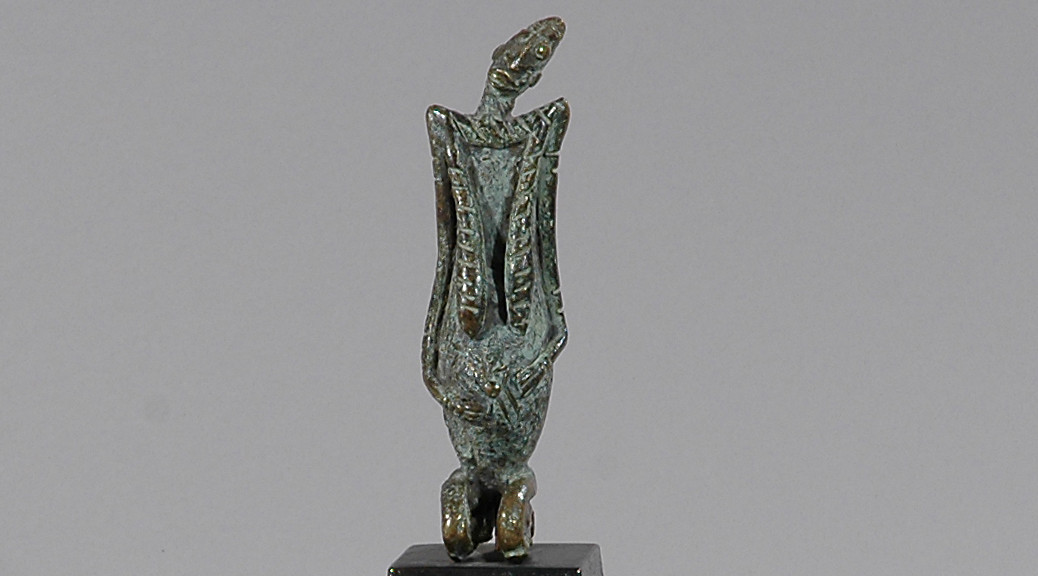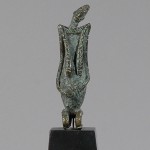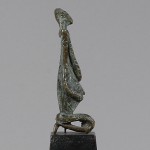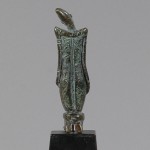NAK 0105-04 – SOLD
Kneeling Bronze Hogon Figure, Dogon, Mali
H: 13,5 cm (5,3″)
This kneeling figure with its head tilted, which emanates thoughtfulness, may represent an ancestor and a Hogon and was placed on a family altar or kept in the shrine of the village priest. There they would make offerings to infuse them with life force to assist humans on earth and to intercede with the deities.
A hogon is a religious figure as well as a temporal authority and has a key role in village rituals and in ensuring fertility and germination. The hogon may be hereditary or may be chosen from among the village elders – custom varies from place to place. The hogon is always a man. After being chosen, a hogon must pass through several months without washing or shaving. After initiation, he wears a red cap, and a pearl bracelet. Hogon live alone and should be celibate, but a village girl may act as a maid. Nobody should touch the hogon.
Among other things the Dogon are famous for their small cast figures and objects, which despite their small size, express status, prestige and power. Known for their art as well as their remarkable villages along the heights of the Bandiagara escarpment in Mali, Dogon art remains today some of the best known and most collected African art.
The cast metal figures are made of a copper alloy exhibiting the technical skill and artistry that Dogon blacksmiths brought to their work. Made by the complex traditional lost-wax process, they are all small enough to be cast solid. The Dogon used metal for their most important ritual objects as well as everyday objects, farming implements and weapons.
Click here for more information about the Dogon people
Request price for Dogon Figure




